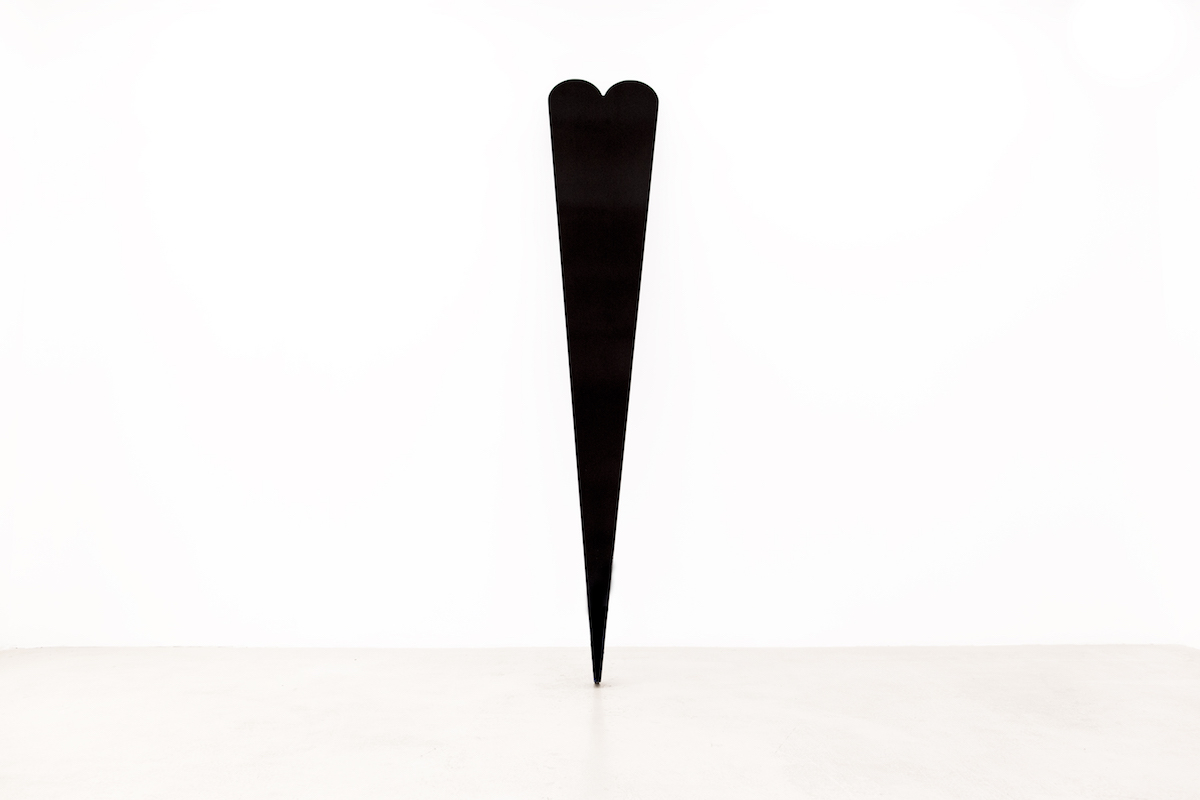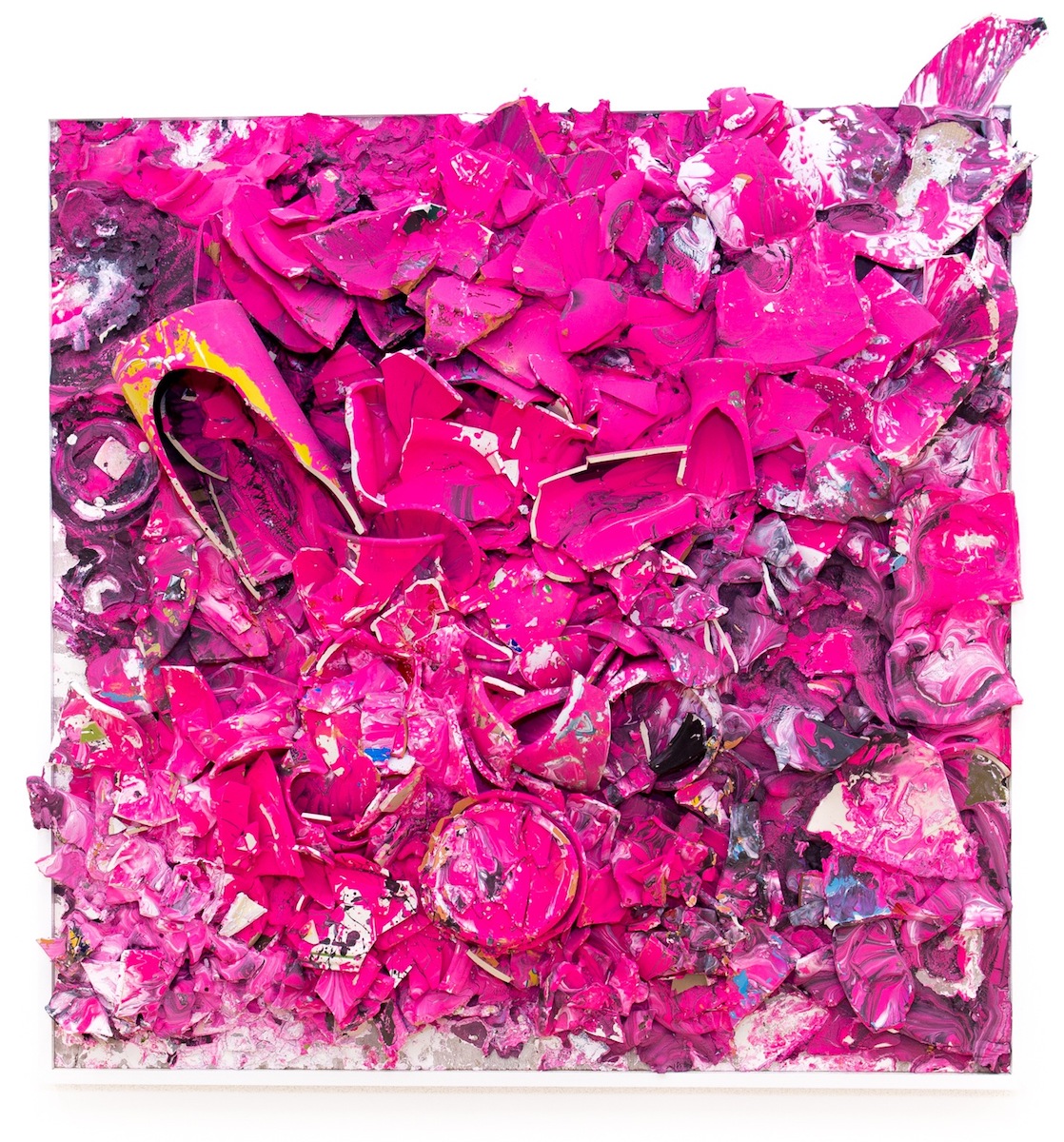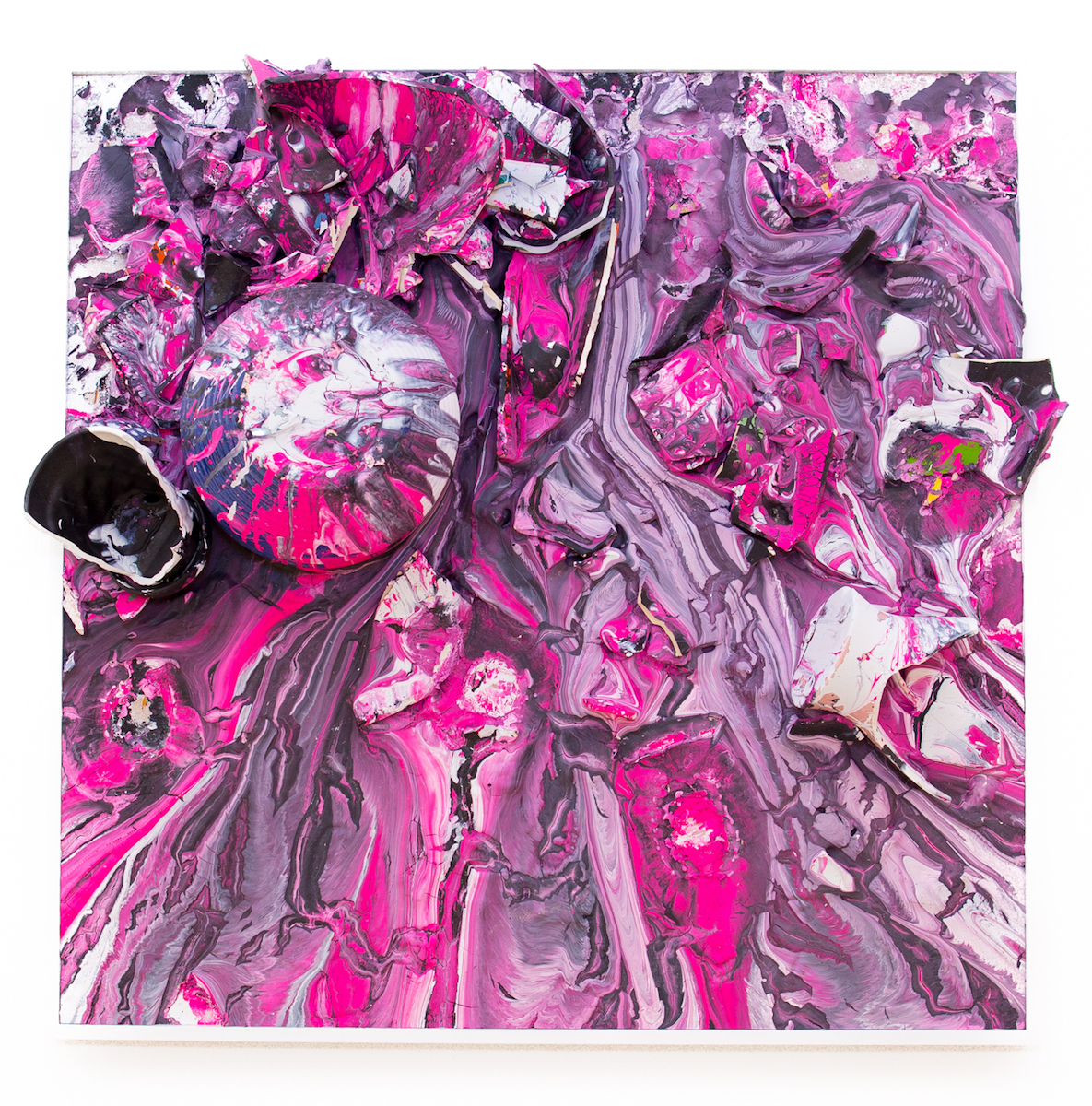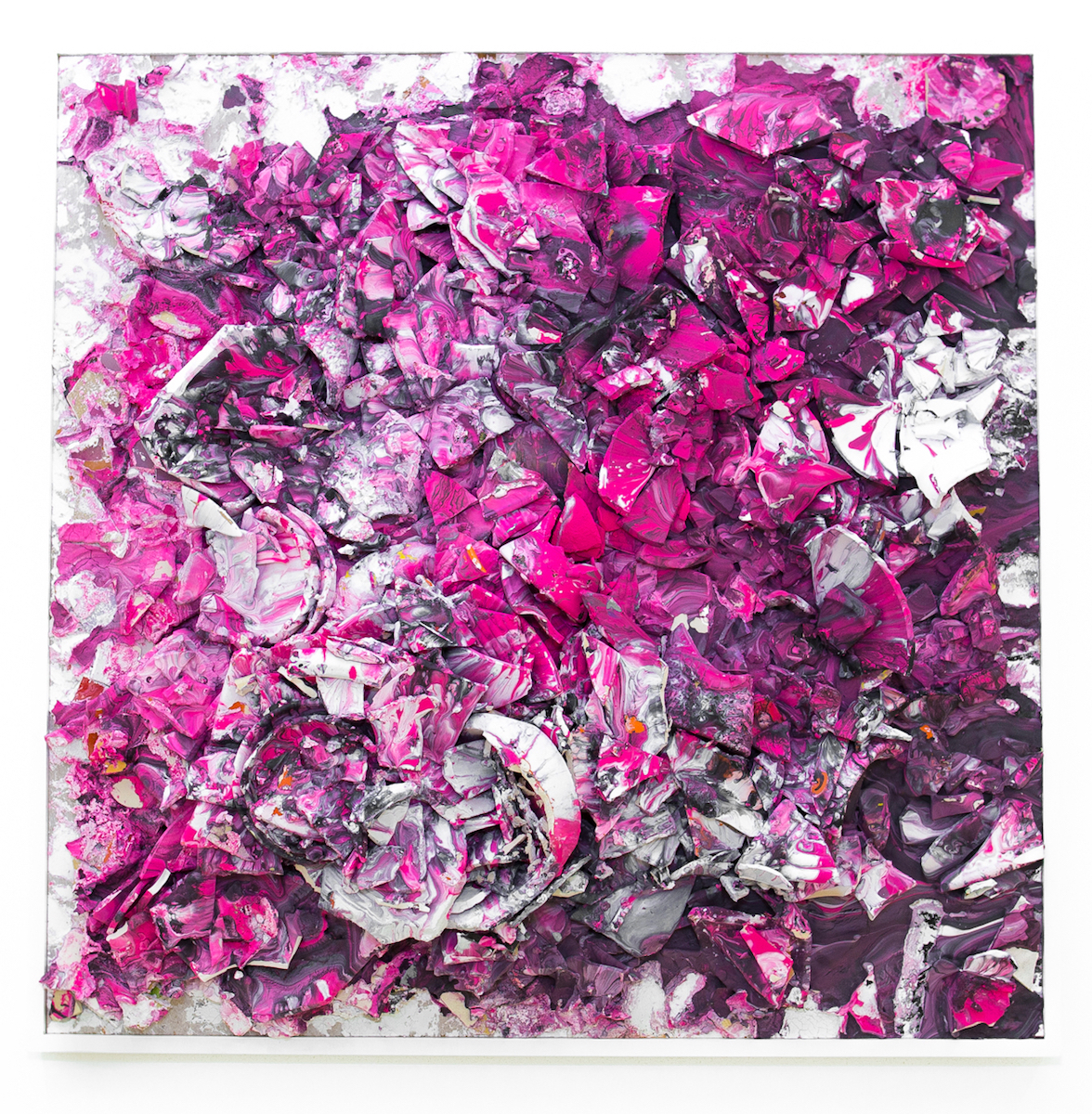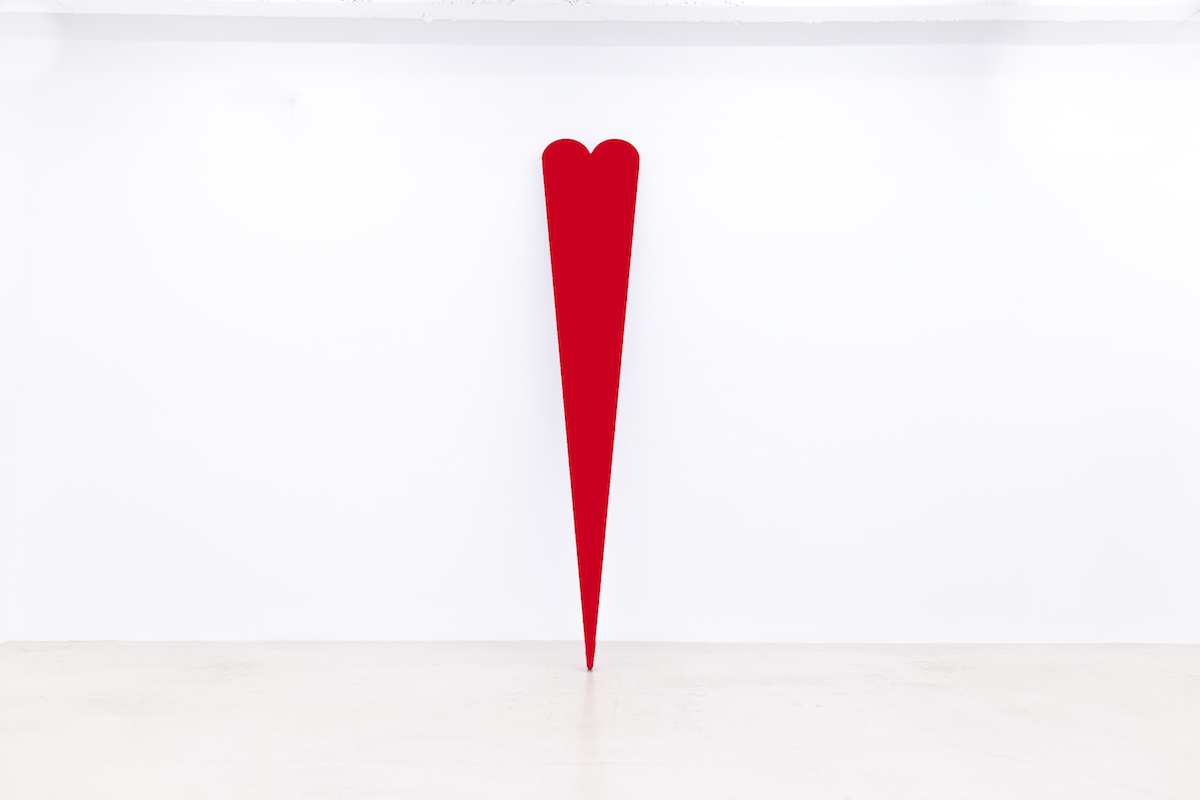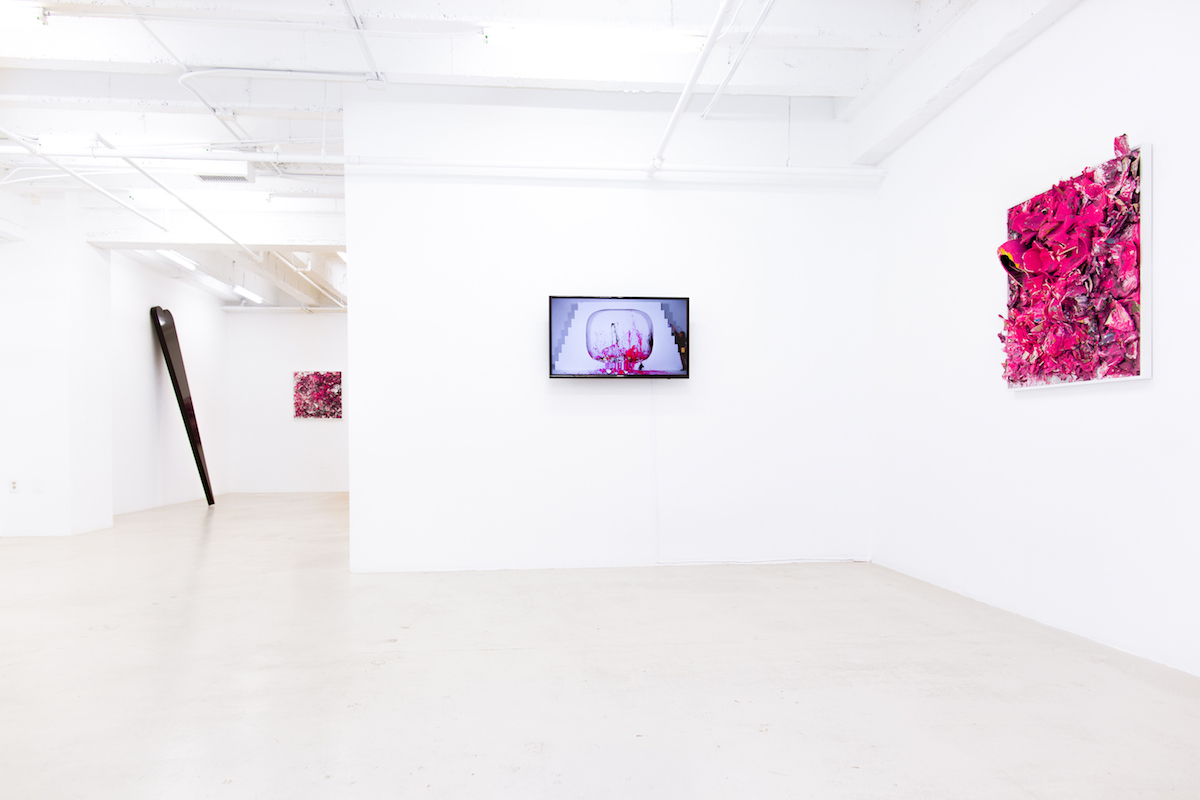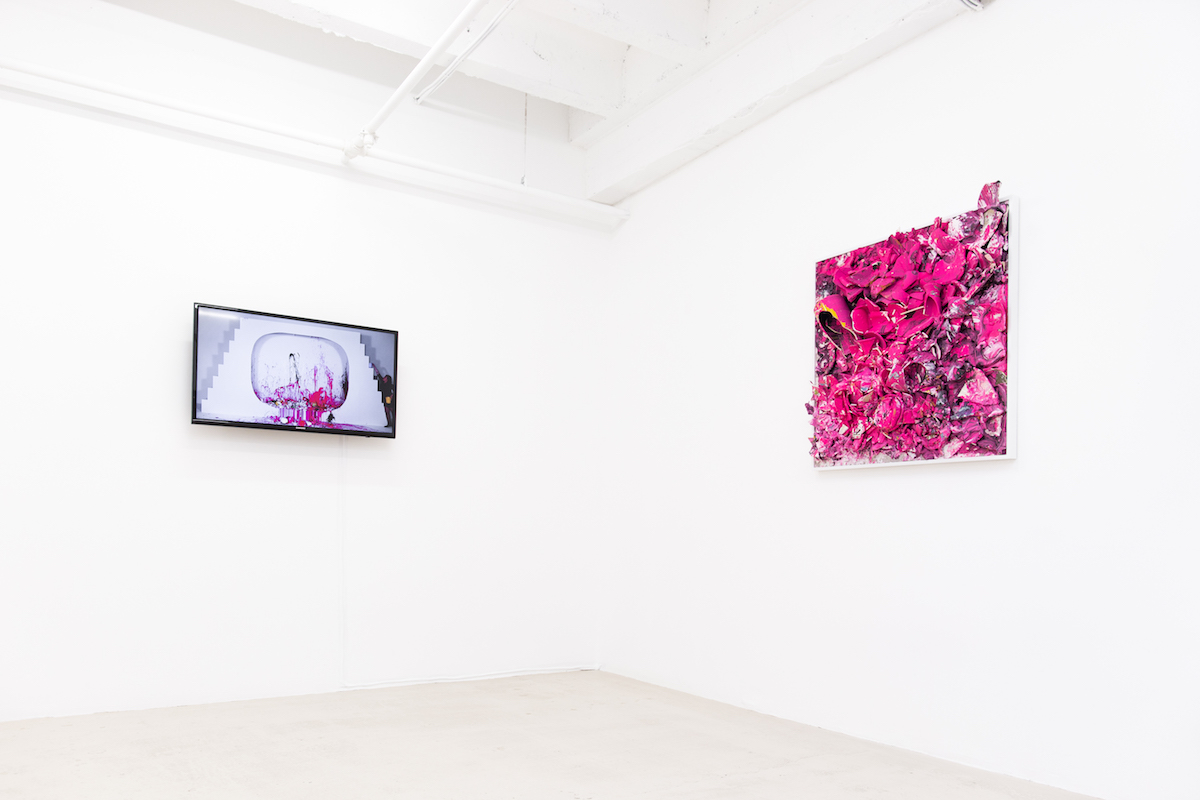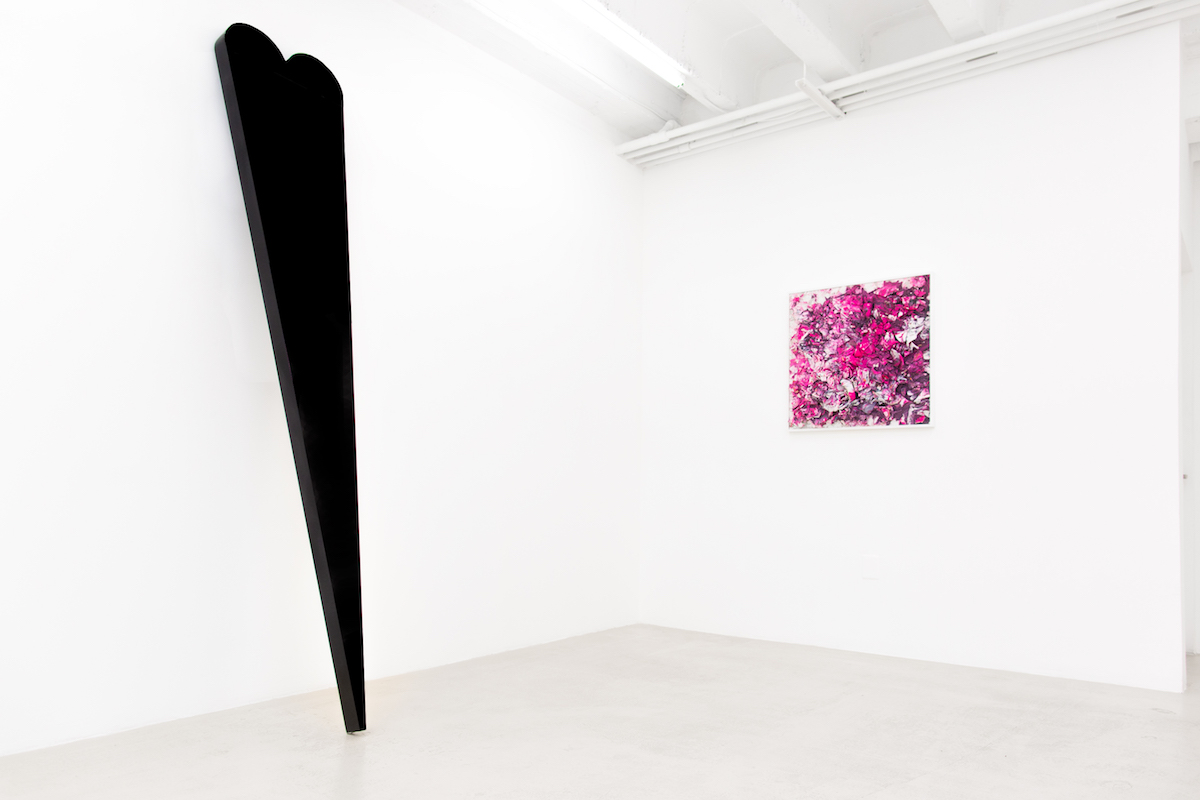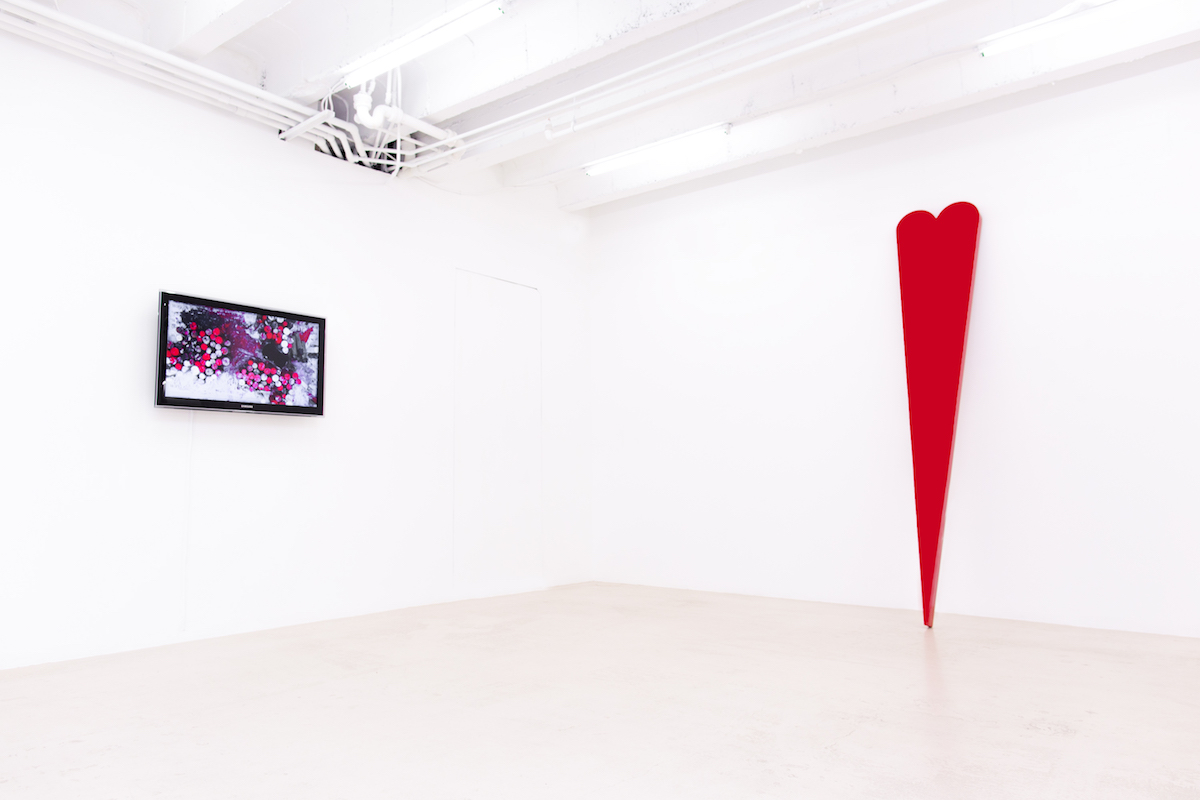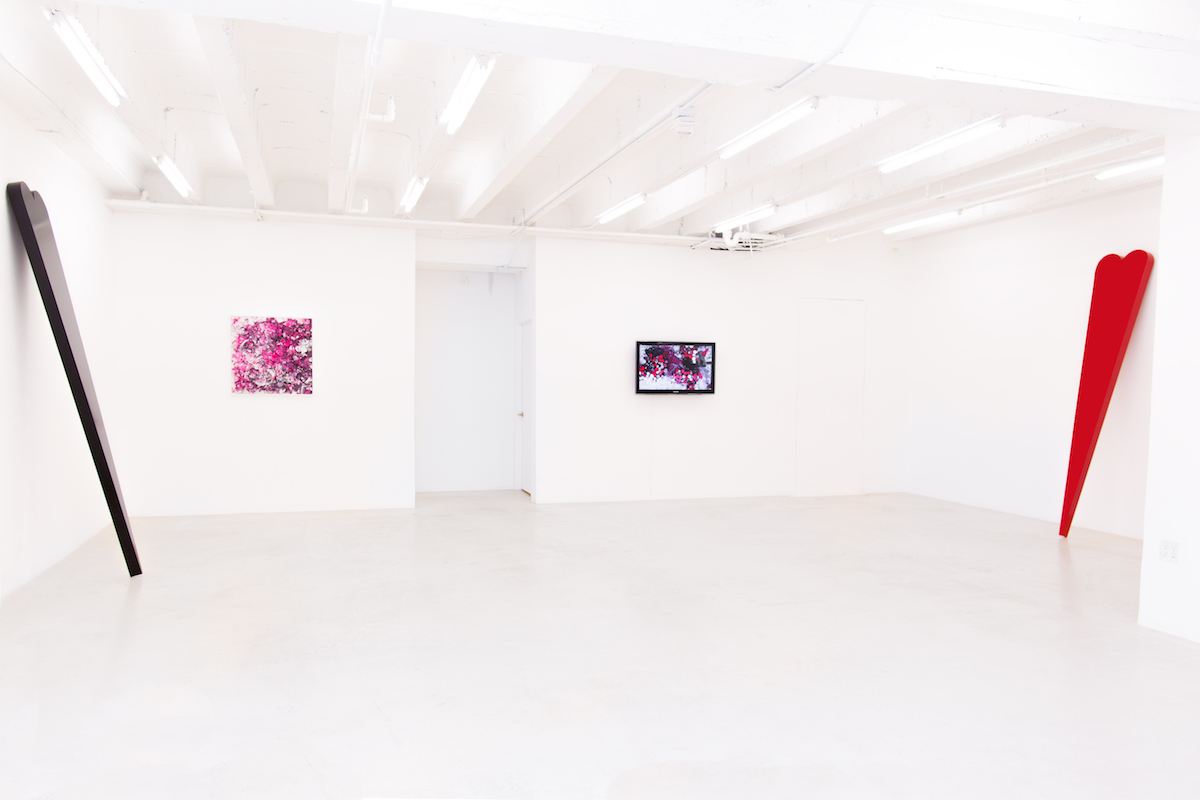Love ‘em, Leave ‘em
Kate Gilmore
I thought I was going to write
A story of my theories tonight
Not this desirous essay on art and home
This alarming dictionary of reformist love
– Bernadette Mayer, Midwinter Day
David Castillo Gallery is proud to present Love ‘em, Leave ‘em, new and recent artworks by Kate Gilmore. Working across performance, video, and sculpture, the artist orientates her practice of self-imposed physical trials toward love as a concept. The result is a powerful critique of feminized labor and a demonstration that “Love, that is to say intensity, should… pass onto the skins of words, sounds, colours…. This is the dissimulation we will not escape, this is anxiety, and this is what we must will” (Lyotard, Libidinal Economy).
In one of four framed sculptural works titled Love ‘em, Leave ‘em, ceramic fragments flash their underbellies from a syrup of Pepto-pink paint. The concavity of another ceramic bowl, still intact, forms a painted mouth— a lustrous oh. This series emerges from the video performance Love ‘em, Leave ‘em commissioned by the MOCA Cleveland in which the artist traverses an immense white pedestal via steep stairs on either end. At its summit, Gilmore unceremoniously topples vessels filled with paint. They break in a shallow hollow the shape of a mid-century television screen set into the pedestal’s face. As the vessels leak their Technicolor contents, the artist ladders up and across the pedestal again, clad in a short black dress and maneuvering fresh vessels ahead of her like chess.
Gilmore shoves not only against traditional form and craft, but also against the legacy of male art world celebrity. The artist’s labor, marked by the female figure, is more arduous, its duration longer, and its impact affective as well as material. It is the feminized labor of love that antagonizes the articulation of power. It is the love-hate relationship to objects that persist in the domestic realm despite Art History’s efforts at appropriation. It is the response to gendered institutions of home and gallery. It is the rhythm of attachment and separation that makes greater demands upon female artists than their male contemporaries.
Love ‘em, Leave ‘em constitutes one in a trilogy of video works in the exhibition, which invoke the labor of love analogous to gendered art practice. A Roll in the Way commissioned by The Aldrich Contemporary Art Museum is not a feckless erotic encounter to which its title alludes. The video depicts Gilmore toiling at another obstacle: hefting paint-dipped logs spread over the floor. The artist, filmed from above, works on hands and knees to retrieve the scattered timbers. Her body smears red, white, and black, slowly obscuring the word “way” repeated across the canvas in sans-serif font. The roll of a log is quite literally in the artist’s way. The way is fraught and demands Gilmore’s undivided service.
In the video performance Like This, Before commissioned by the deCordova Sculpture Park & Museum, Gilmore faces a monolithic trapezoid of black wood partitioned by ducts. The artist scales up and over its surfaces, her high heels ringing, bearing generous glass cylinders of paint. When kicked over in succession, each shatters to release a thick white torrent that pools into glass bowls below. Like This, Before gestures to Art History and is based on a Frank Stella painting, on complicated love-hate histories.
Lauren Berlant argues that love, as a space of destabilization, non-sovereignty, risk, and urgency, constitutes a model for social change. When Gilmore leans three sleek, heart shaped sculptures against a wall— a Black Heart, Red Heart, and Sweetheart as angled, elongated, and monochromatic as John McCracken’s minimalist plank sculptures— social shift seems imminent. Gilmore surprises the hearty labor of the female body with destructive as well as creative intensities. In love as in art, at home as in public, the artist contrives failure and success on her own terms. The pedestal is no longer a place of reverence, but an alarming dictionary of reformist love.
Kate Gilmore was born in Washington D.C., received her MFA from the School of Visual Arts, New York, and lives and works in New York, NY. She has been the recipient of several international awards and honors such as the Rauschenberg Residency Award, Rauschenberg Foundation, Captiva, FL (2014), Rome Prize from the American Academy in Rome (2007/2008), The Louis Comfort Tiffany Foundation Award, New York, NY (2009/2010), Art Matters Grant, New York, NY (2012), Lower Manhattan Cultural Council Award for Artistic Excellence, New York, NY (2010), the Franklin Furnace Fund for Performance, New York, NY (2006), “In the Public Realm”, Public Art Fund, New York, NY (2010), The LMCC Workspace Residency, New York, NY (2005), New York Foundation for The Arts Fellowship, New York, NY (2012 and 2005), and the Marie Walsh Sharpe Space Residency, Brooklyn, NY (2010).The artist’s work is currently on view in Queens International 2016 at the Queens Museum, New York. Upcoming museum solo shows include the Everson Museum, Syracuse. Recent museum solo exhibitions include The Aldrich Contemporary Art Museum, Connecticut and Museum of Contemporary Art Cleveland, Ohio; Public Art Fund, Bryant Park, New York, among many others. The artist’s work has been exhibited at Parasol Unit, London, England; The Fourth Moscow Biennale of Contemporary Art, Moscow, Russia; Whitney Biennial, Whitney Museum of American Art, New York; Brooklyn Museum, New York; J. Paul Getty Museum, Los Angeles; RISD Museum of Art, Providence; MAK Museum of Art, Vienna, Austria; and Greater New York 2005 at PS1/MoMA Contemporary Art Center, Long Island City. Gilmore’s work is in the permanent collections of The Museum of Modern Art, New York; Whitney Museum of American Art, New York; Brooklyn Museum, New York; Museum of Contemporary Art (MCA), Chicago; Museum of Fine Arts, Boston; San Francisco Museum of Modern Art, San Francisco; Verbund Collection, Vienna, Austria; Sammlung Julia Stoschek Collection, Dusseldorf, Germany; LAC, Lambert Collection, Geneva Switzerland; Fondazione Morra Greco, Naples, Italy, among numerous others.

